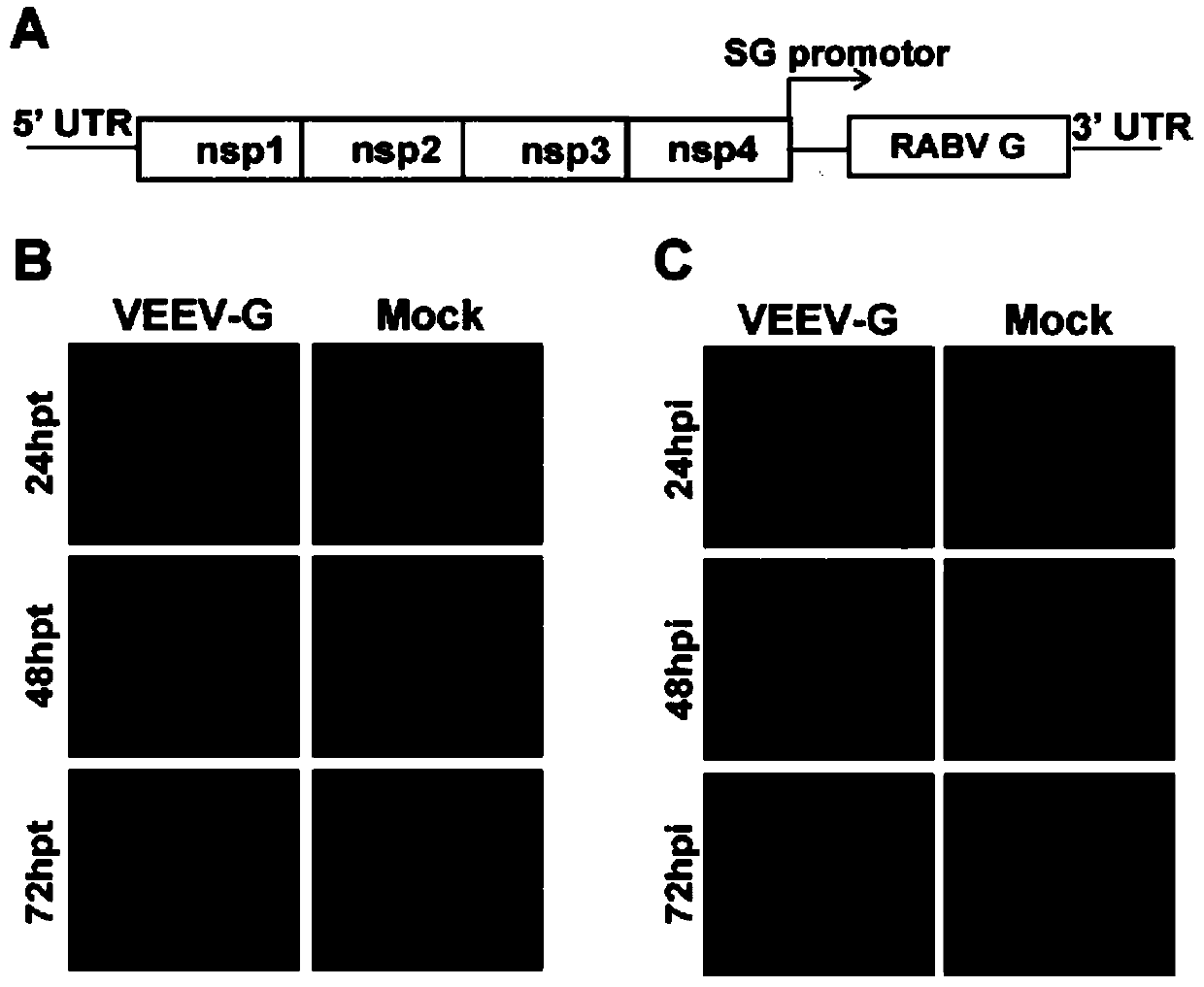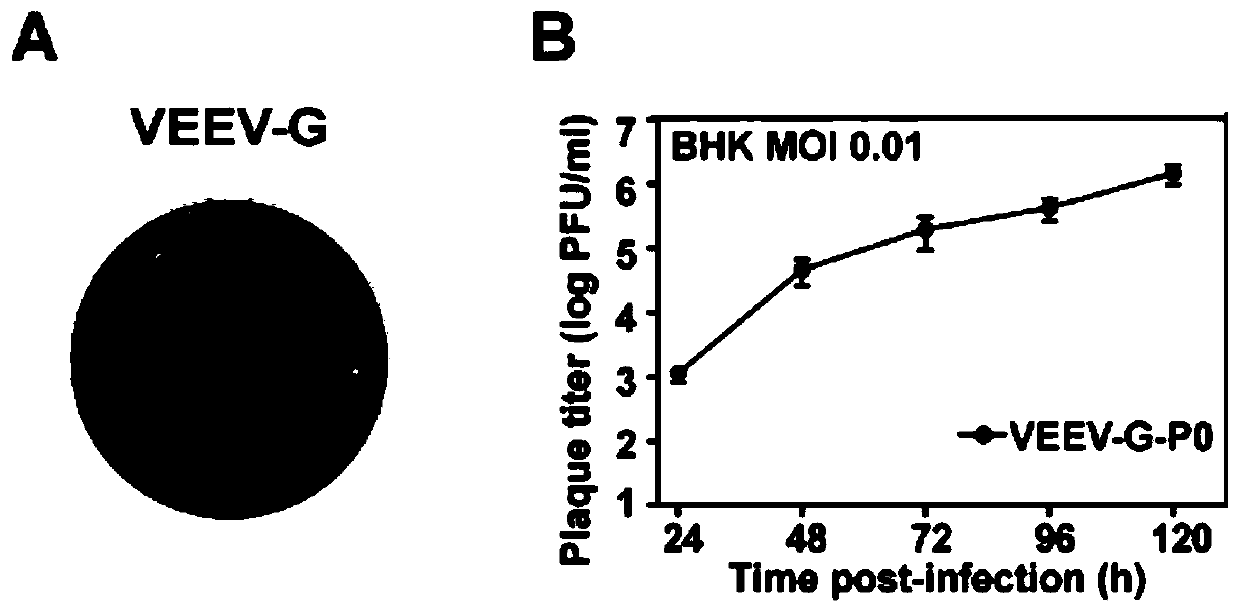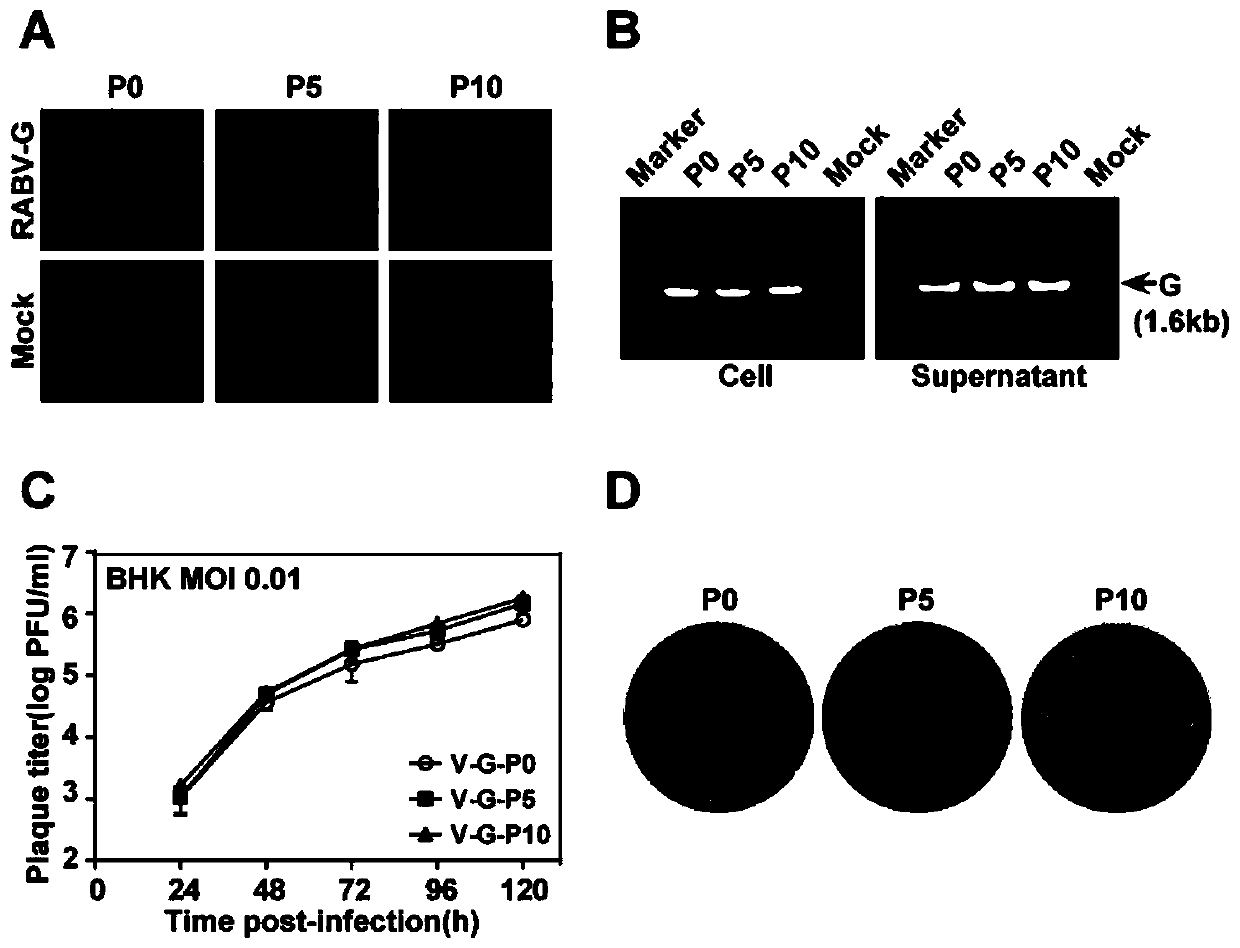Lphavirus replicon vector-based rabies virus infectious clone, and preparation method and application thereof
A technology for infectious cloning and rabies virus, which is applied in the field of construction and preparation of rabies vaccine strains, can solve problems such as potential safety hazards, and achieves the effects of high safety, good genetic stability and simple acquisition method.
- Summary
- Abstract
- Description
- Claims
- Application Information
AI Technical Summary
Problems solved by technology
Method used
Image
Examples
Embodiment 1
[0044] Construction of rabies vaccine strain VEEV-RABV G infectious clone and rescued virus:
[0045] In this example, an infectious clone expressing rabies virus glycoprotein using the Venezuelan equine encephalitis virus vaccine strain TC-83 replicon as a vector was constructed and its properties were explored:
[0046]1. Construction of infectious clones of rabies vaccine strain VEEV-RABV G: According to the gene sequence of rabies virus LBNAR strain (GenBank accession no.M31046.1), two primers for amplifying membrane protein G were synthesized, and the sequences of the upstream and downstream primers were as follows: Shown in F and R in Table 1. The PcDNA3.1-G plasmid used for G protein amplification template was provided by Zhao Ling’s laboratory of Huazhong Agricultural University. This plasmid was inserted into PcDNA3 by the G protein gene in SAD-B19 strain through NheI and KpnI restriction sites. 1 plasmid; the TC-83 replicon plasmid of the Venezuelan equine encephali...
Embodiment 2
[0058] VEEV-RABV G virus plaque morphology identification and growth curve determination provided by the invention:
[0059] The VEEV-RABV G virus rescued in Example 1 was subjected to a plaque test to identify plaque morphology and determine its growth curve: inoculate 1×10 in each well of a 24-well cell culture plate 5 For BHK-21 cells, when the cell confluency reaches 90%, discard the medium in the well, add 100 μL of the virus collected in Step 4 of Example 1 diluted 10 times with DMEM medium containing 2% FBS, and adsorb for 1 hour at 37°C , shake well every 15 minutes. After the adsorption was completed, the virus liquid in each well was discarded, and the cover of DMEM medium containing 2% FBS and 2% methylcellulose was added, and cultured in an incubator at 37°C and 5% CO2 for 3 days. After formation, stain with a staining solution containing 1% crystal violet and 3.7% formaldehyde, treat at room temperature for 30 minutes, take out the staining solution in the well, ...
Embodiment 3
[0062] The VEEV-RABV G virus provided by the invention has genetic stability:
[0063] 1. The VEEV-RABV G virus (P0 generation) rescued in Example 1 was used to infect BHK-21 cells at a multiplicity of infection of 0.01. After 5 days, the CPE obviously collected the cell supernatant (P1 generation), and each generation passed three strains of virus in parallel. , repeat this step 10 times. After the P0, P5, and P10 generation viruses were reinfected into the cells, the specific antibody of the G protein was used to carry out IFA (the same method as in Example 1) to detect the protein expression ( image 3 Middle A), the results of IFA showed that the expression of G protein could be detected in the viruses of P0, P5, and P10 generations; the cells and supernatants collected in P0, P5, and P10 generations were extracted according to the instructions of Trizol and QIAamp ViralRNA Mini Kit. The cellular RNA or viral RNA was stored at -80°C for later use. Carry out RT-PCR ( im...
PUM
 Login to View More
Login to View More Abstract
Description
Claims
Application Information
 Login to View More
Login to View More - R&D
- Intellectual Property
- Life Sciences
- Materials
- Tech Scout
- Unparalleled Data Quality
- Higher Quality Content
- 60% Fewer Hallucinations
Browse by: Latest US Patents, China's latest patents, Technical Efficacy Thesaurus, Application Domain, Technology Topic, Popular Technical Reports.
© 2025 PatSnap. All rights reserved.Legal|Privacy policy|Modern Slavery Act Transparency Statement|Sitemap|About US| Contact US: help@patsnap.com



